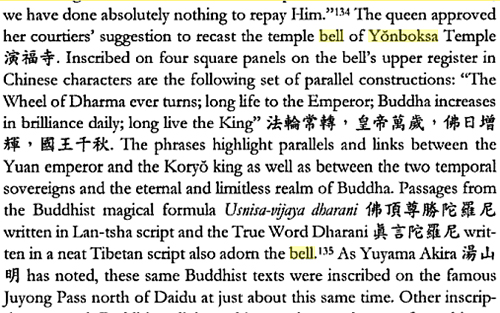Seems like it's time to restate my thinking on tattoos because too many people are getting offended by my response to requests for help with tattoos. When someone asks me for a tattoo design I look for some things:
Does the person understand the thing they want tattooed? If someone is saying "I want this Buddhist symbol (often a seed syllable) tattooed on me,
what does it mean?" then I start to switch off. If you don't know what it means, why are you looking to get a tattoo of it?
Is the person a Buddhist practitioner? Some people just want something that looks good. End of discussion, I'm not interested.
Does the person have a context? Sometimes people who are Buddhists will find a mantra on the internet and have no idea of what it means or the context for it's application but they think it is cool. It isn't. If you have no one around to explain a practice, if you are relying on a book or (worse) the internet, then don't do the practice. I'd make an exception for doing an online meditation course like that offered by
wildmind.org, but that is carefully thought out and provides a lot of support and guidance - you get contact with real people. I usually want to know what kind of Buddhism you practice and who your teacher is, if only for interest's sake. If you say "so and so gave me this mantra and I'm looking for help visualising it" then I will do what I can to help.
Has the person done their own research? Of course some things are secret or not much written about and so it can be difficult to find out about them. See the point above. But if someone wants the Medicine Buddha mantra then I expect them to have read and studied the relevant material, and to have developed a genuine connection with the mantra. This usually shows when a person writes to me. And again I will do what I can to help.
Finally, and this is me being a bit grumpy and capricious,
Sanskrit is a
language and not a
script. If you don't know the difference then I'm less likely to help. I can write Sanskrit in several scripts - Devanāgarī, dbu-can, Siddhaṃ, Lantsa (a bit). Be clear about what you want, else you don't come across as serious.
Actually one more thing. I've studied this stuff for years, and worked on improving my skills. Doing calligraphy takes time and costs money. Be prepared to offer me something for my work up front, don't wait for me to ask. It need not be much, whatever you can afford - or maybe you have a skill you can trade with me (I need proof reading done for instance). But show me that you value my work. So many people fail to even say
thanks when I've spent time doing calligraphy for them.
Don't expect me to get excited about tattoos. I don't see the point. I have a few friends with them, and I've done designs for some, but only when someone has ticked all the boxes above. My advice is
don't get a tattoo: go on retreat, or do a meditation course, or go see your teacher, or start learning a relevant language, or learn calligraphy yourself. Calligraphy is a wonderful art that few people consider taking up - but if you can write then you can do calligraphy.
 My copy of 梵字必携―書写と解読 has just arrived. I bought it off Ebay which is the first success I've had with that website! (though the cover is much plainer than this Amazon image) The Google translation of the title is: "Sanskrit manual - inscription and decryption". Having seen the monumental Bonji Taikan ( 梵字大鑑) one can see that this is simply a cut down version of that book - more or less identical but less elaborate. This makes it perfect for me as I don't read Japanese anyway and I'm more interested in the pictures of Siddhaṃ characters.
My copy of 梵字必携―書写と解読 has just arrived. I bought it off Ebay which is the first success I've had with that website! (though the cover is much plainer than this Amazon image) The Google translation of the title is: "Sanskrit manual - inscription and decryption". Having seen the monumental Bonji Taikan ( 梵字大鑑) one can see that this is simply a cut down version of that book - more or less identical but less elaborate. This makes it perfect for me as I don't read Japanese anyway and I'm more interested in the pictures of Siddhaṃ characters.






